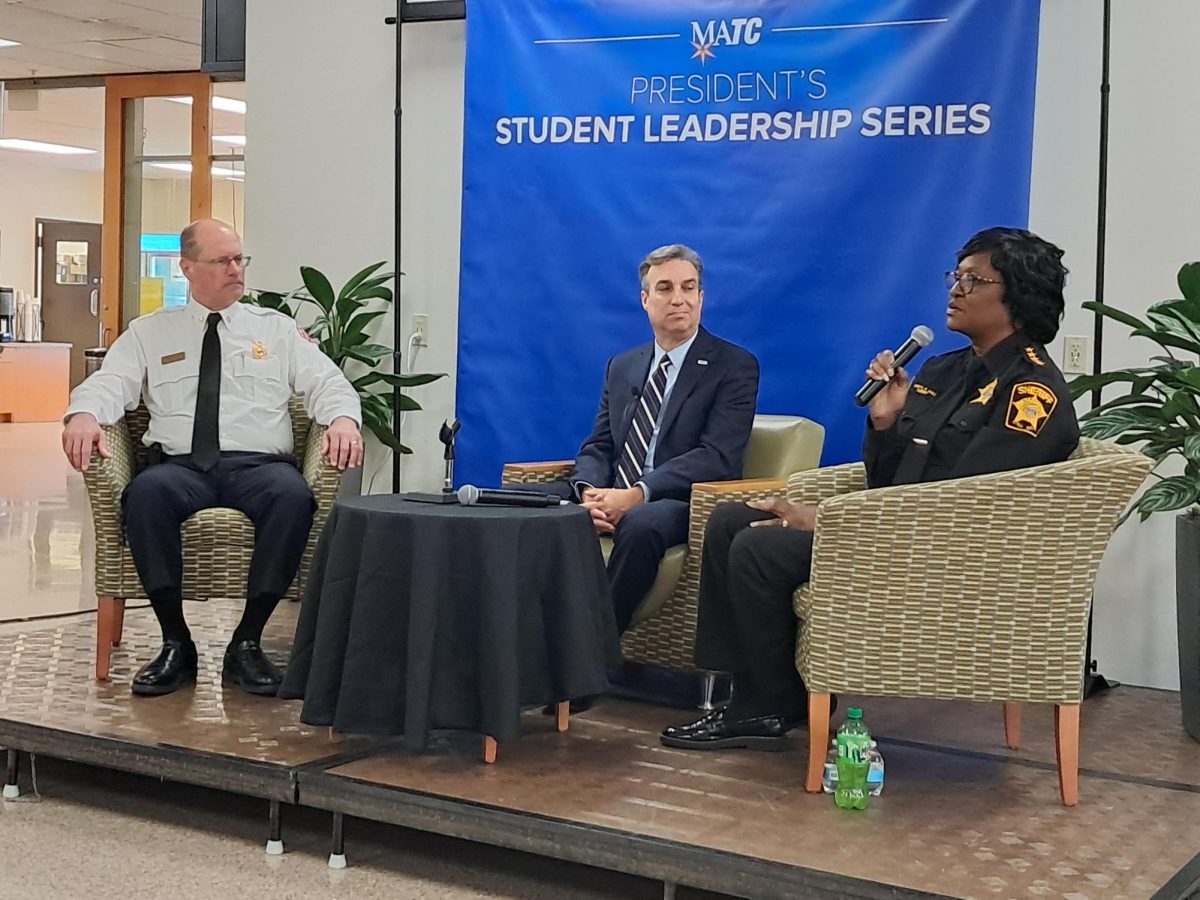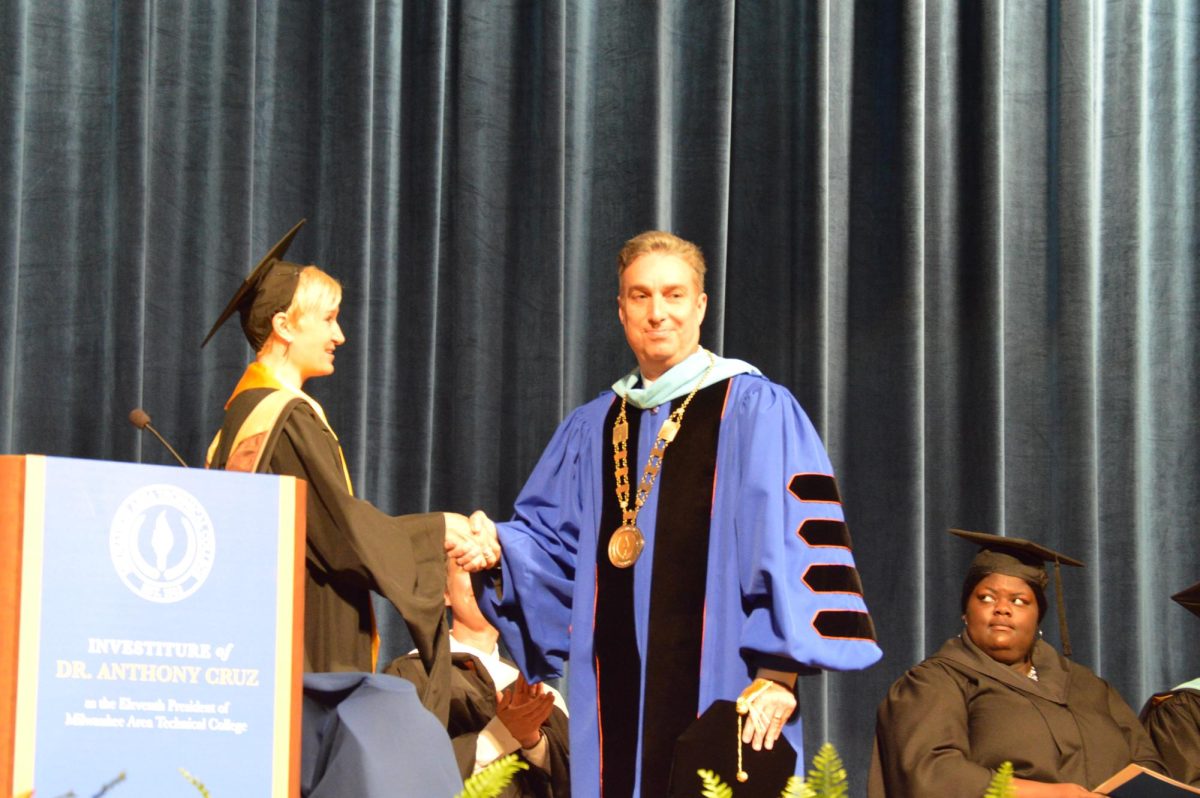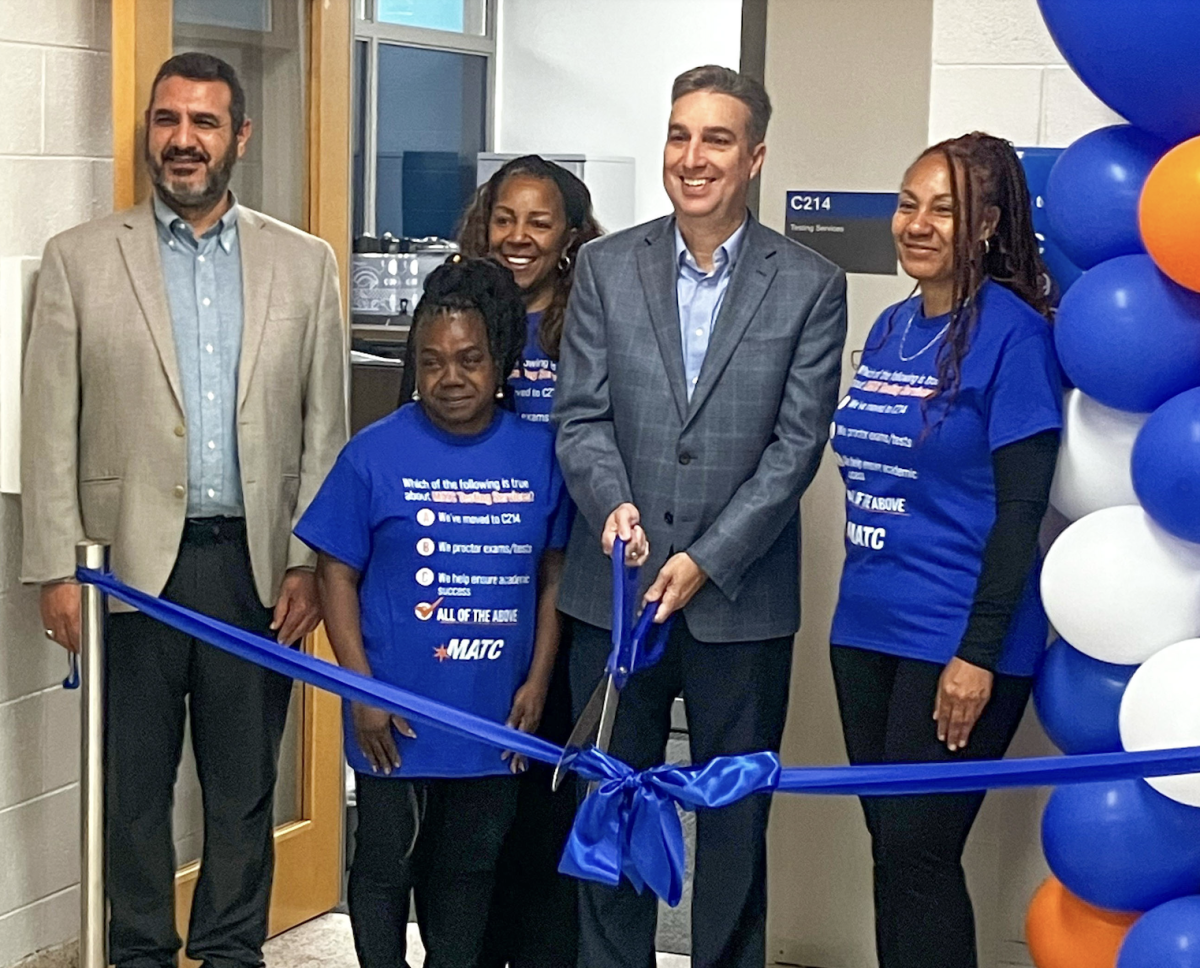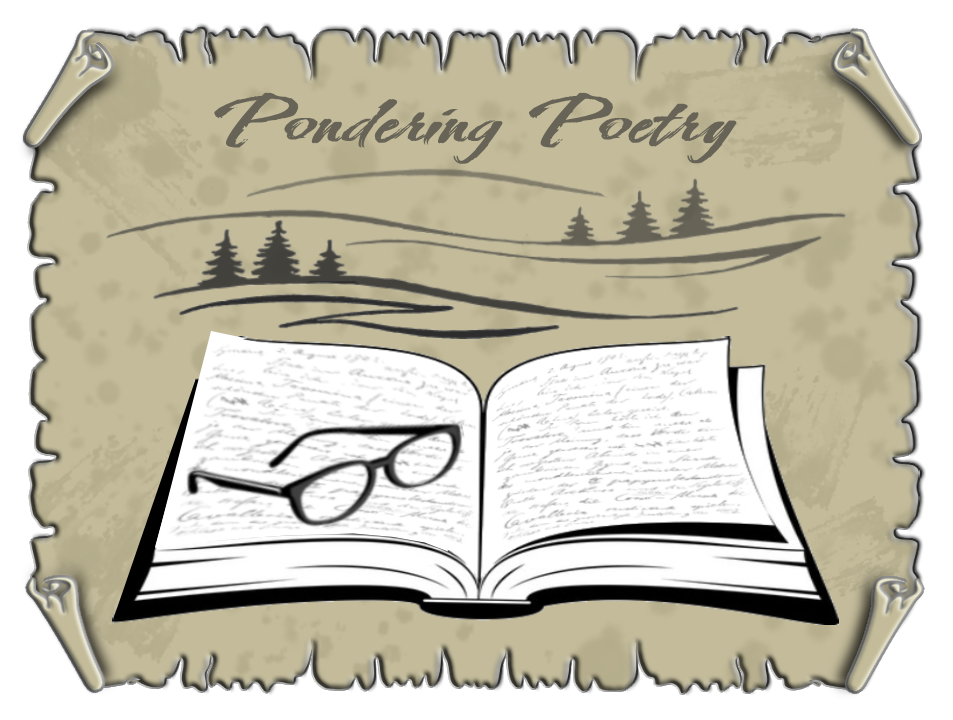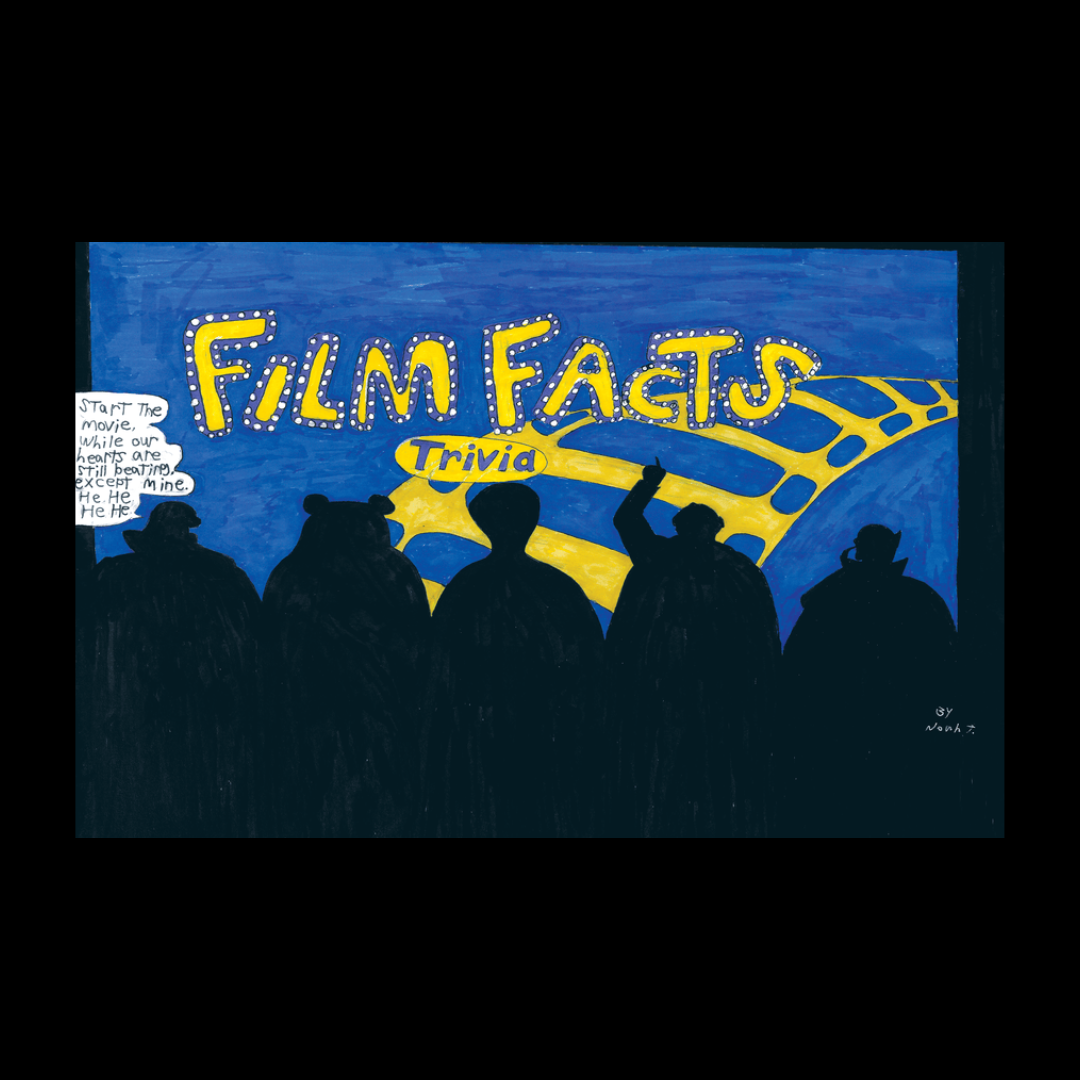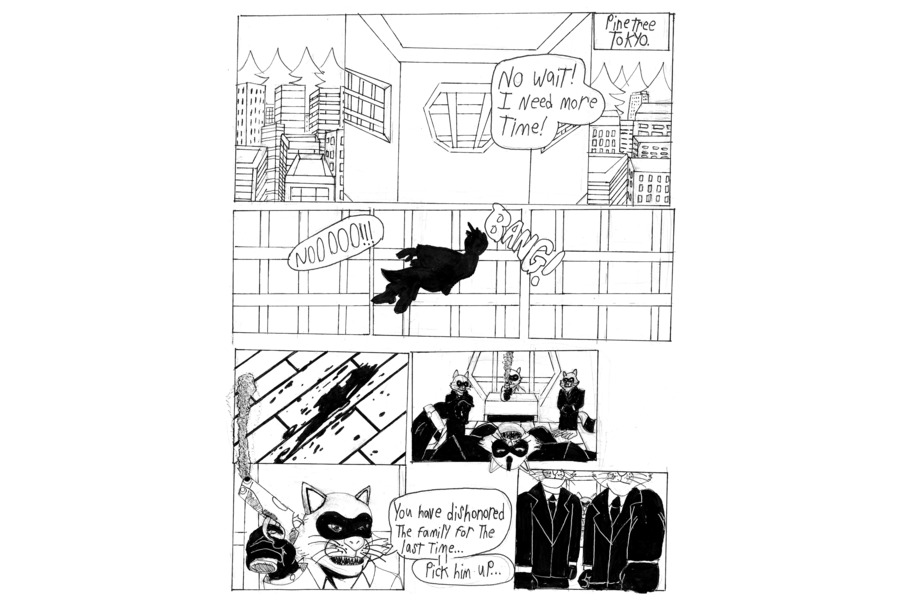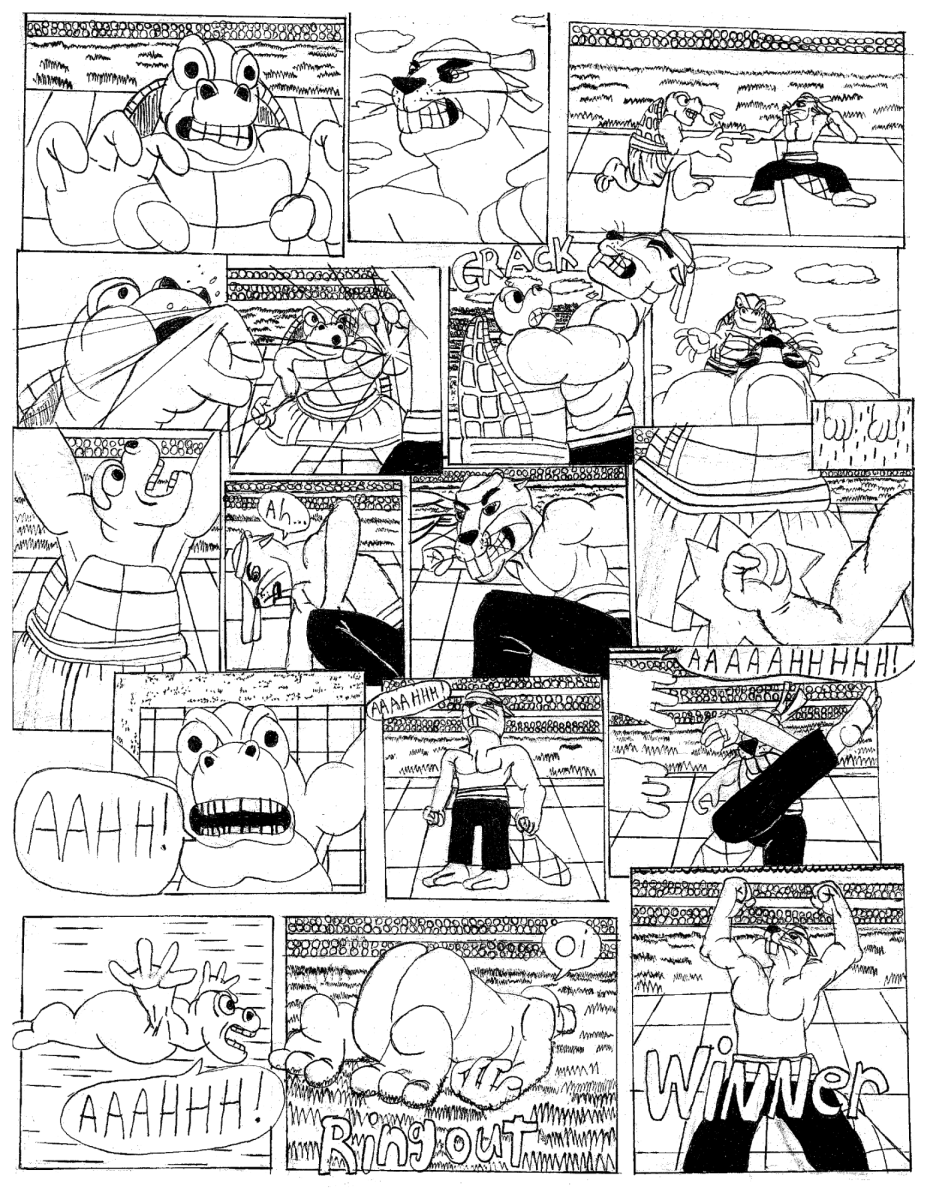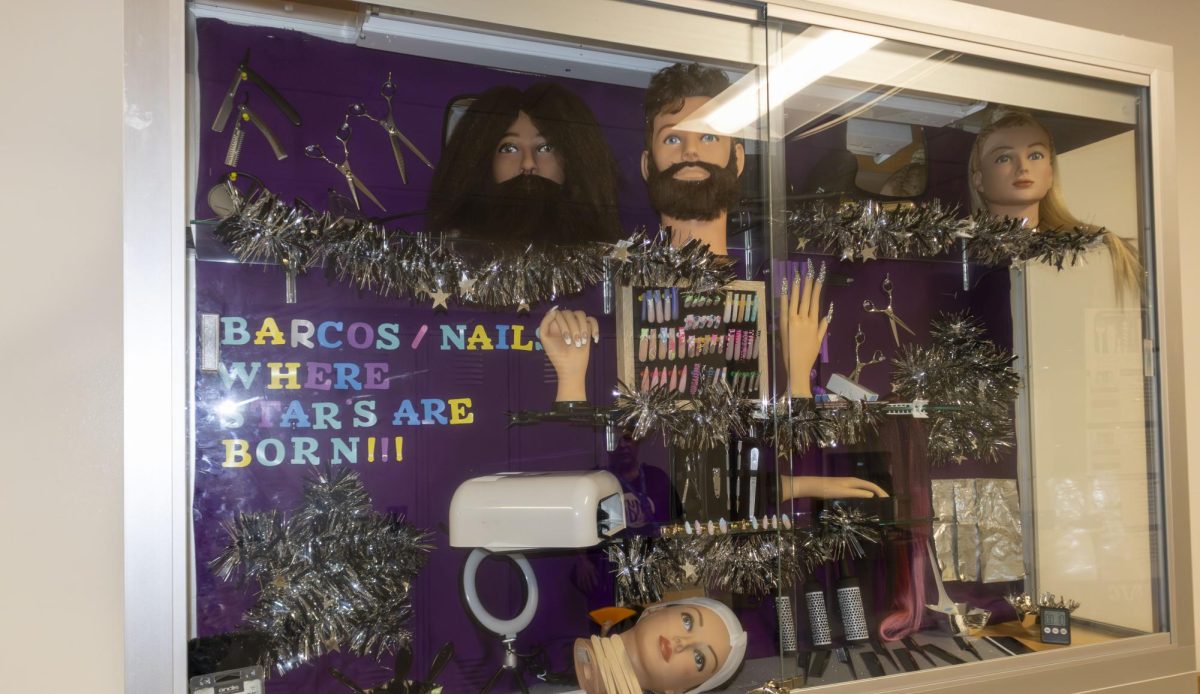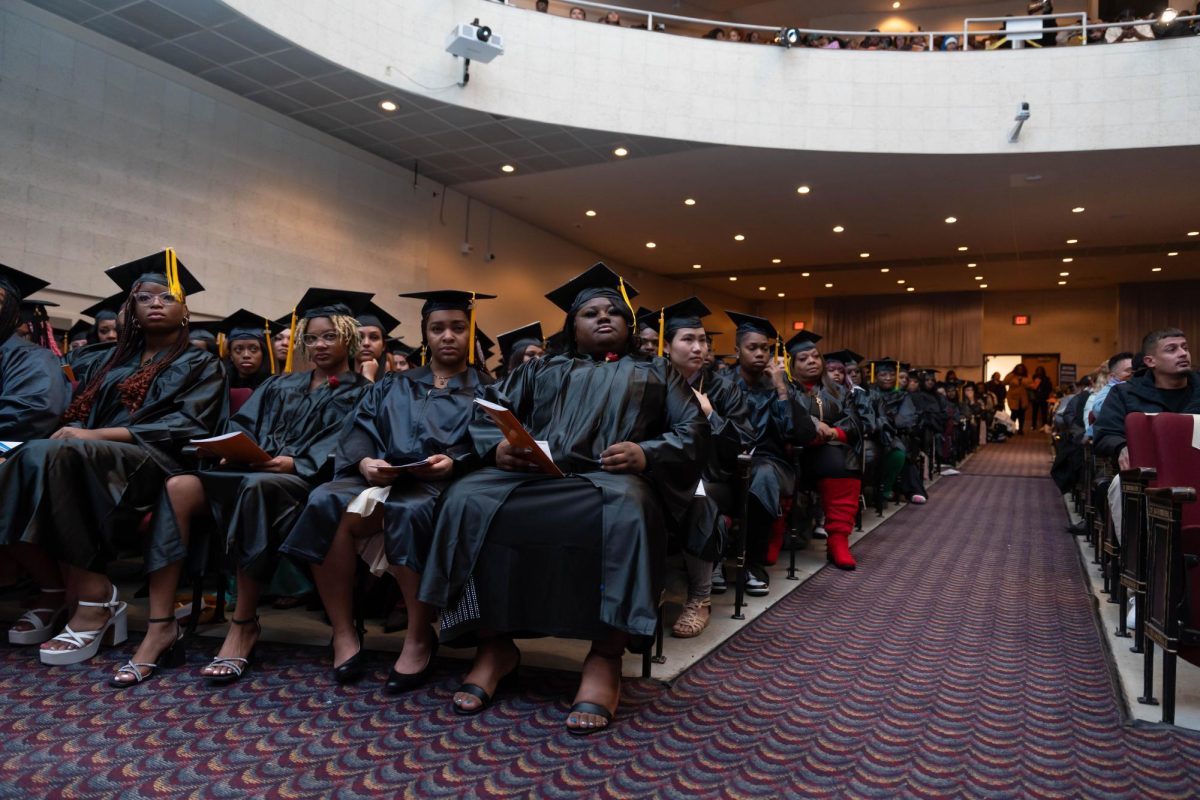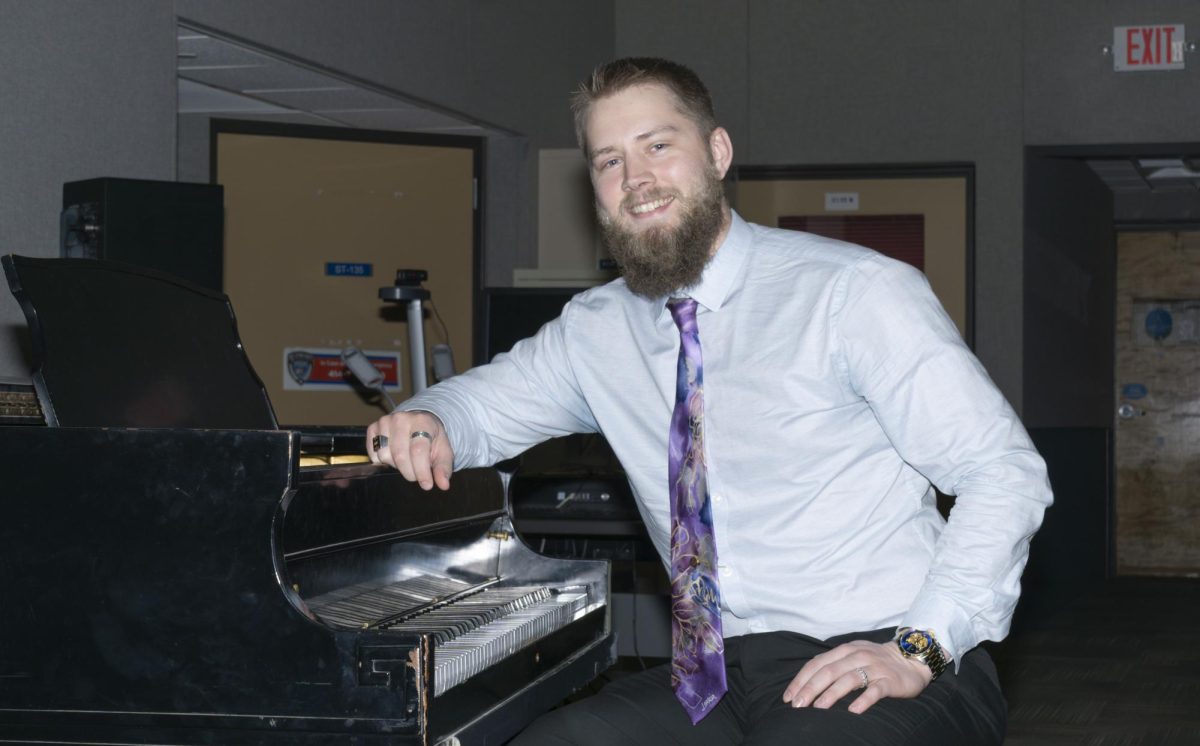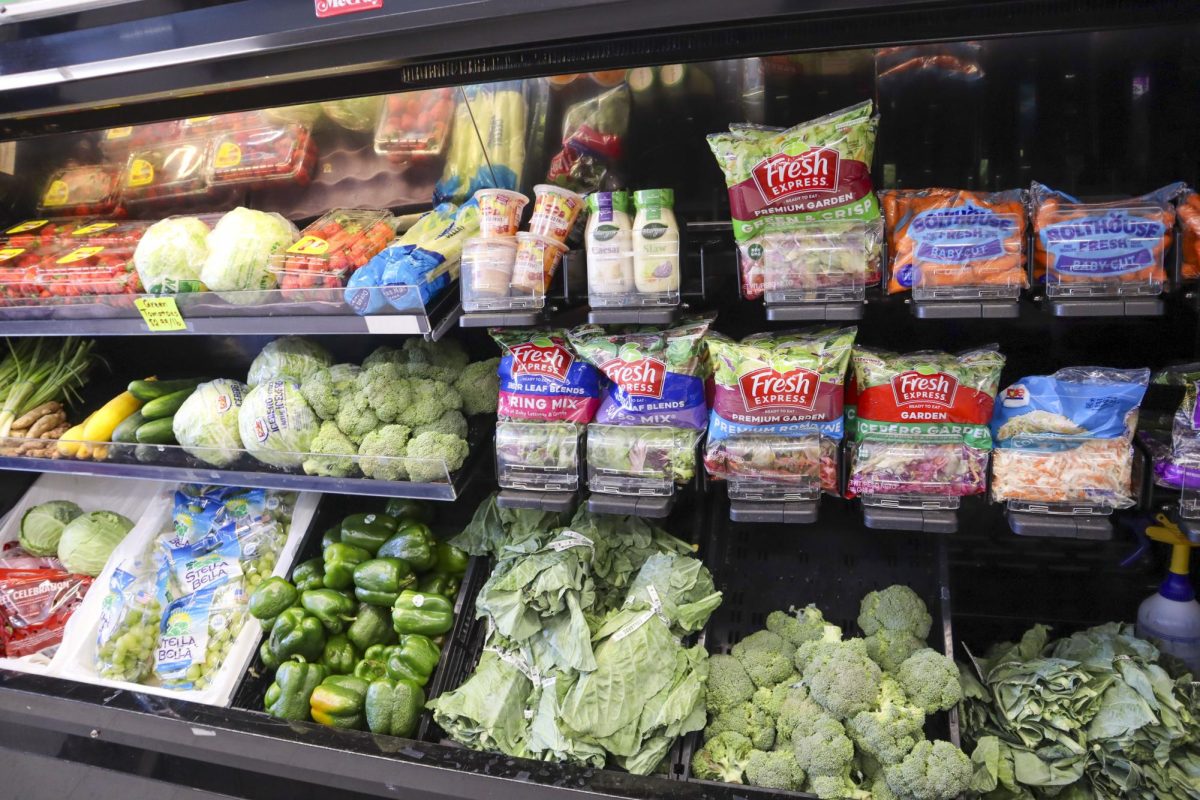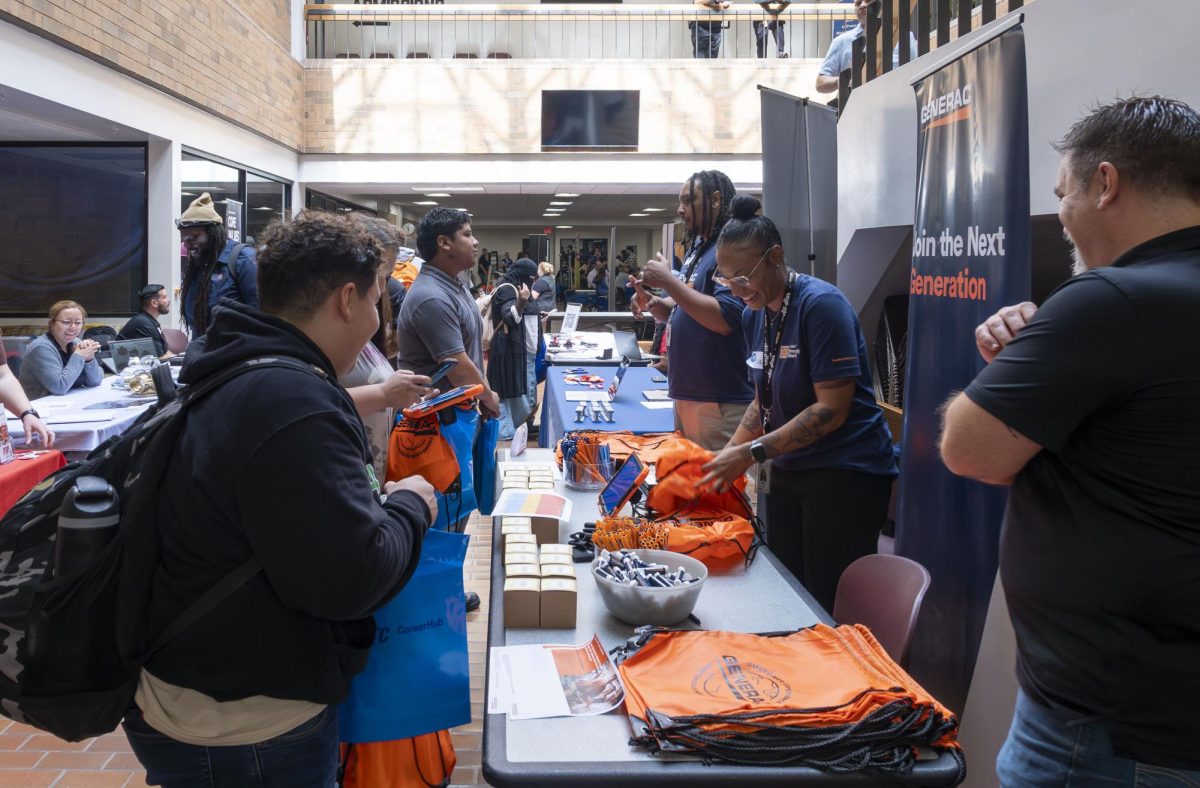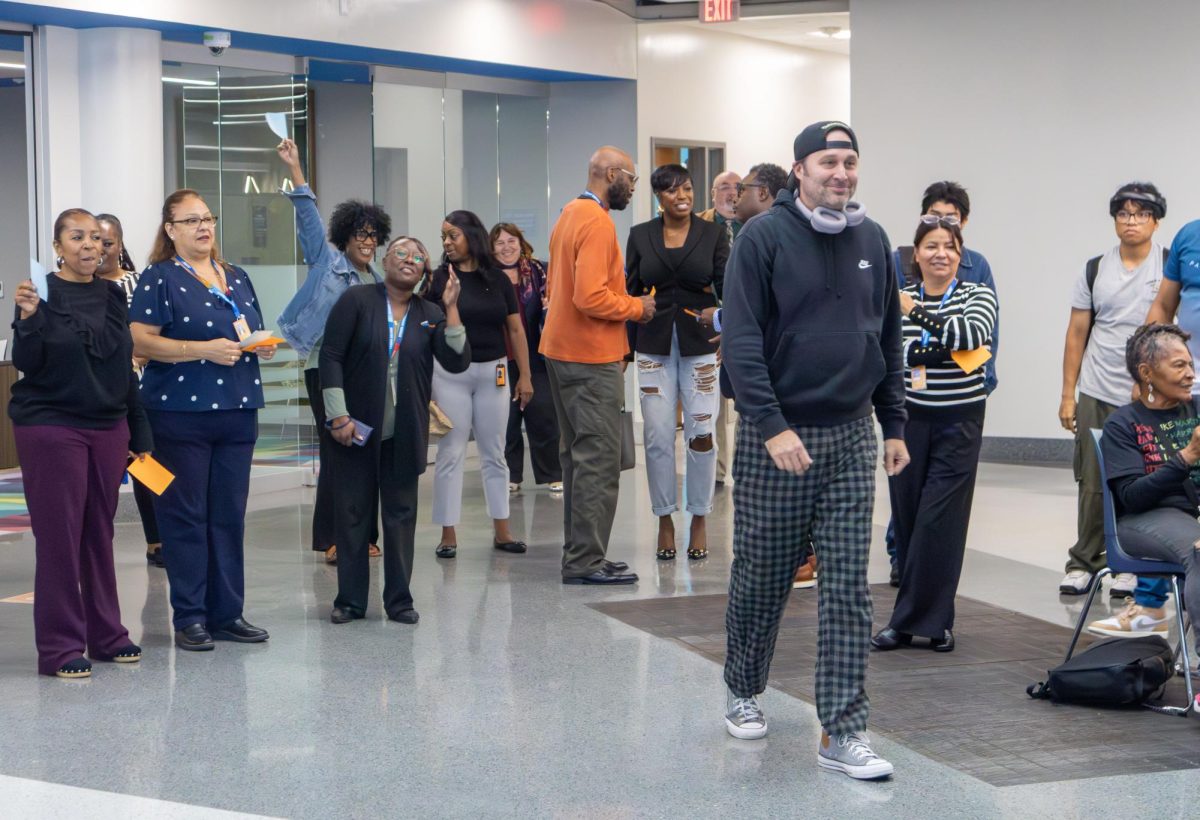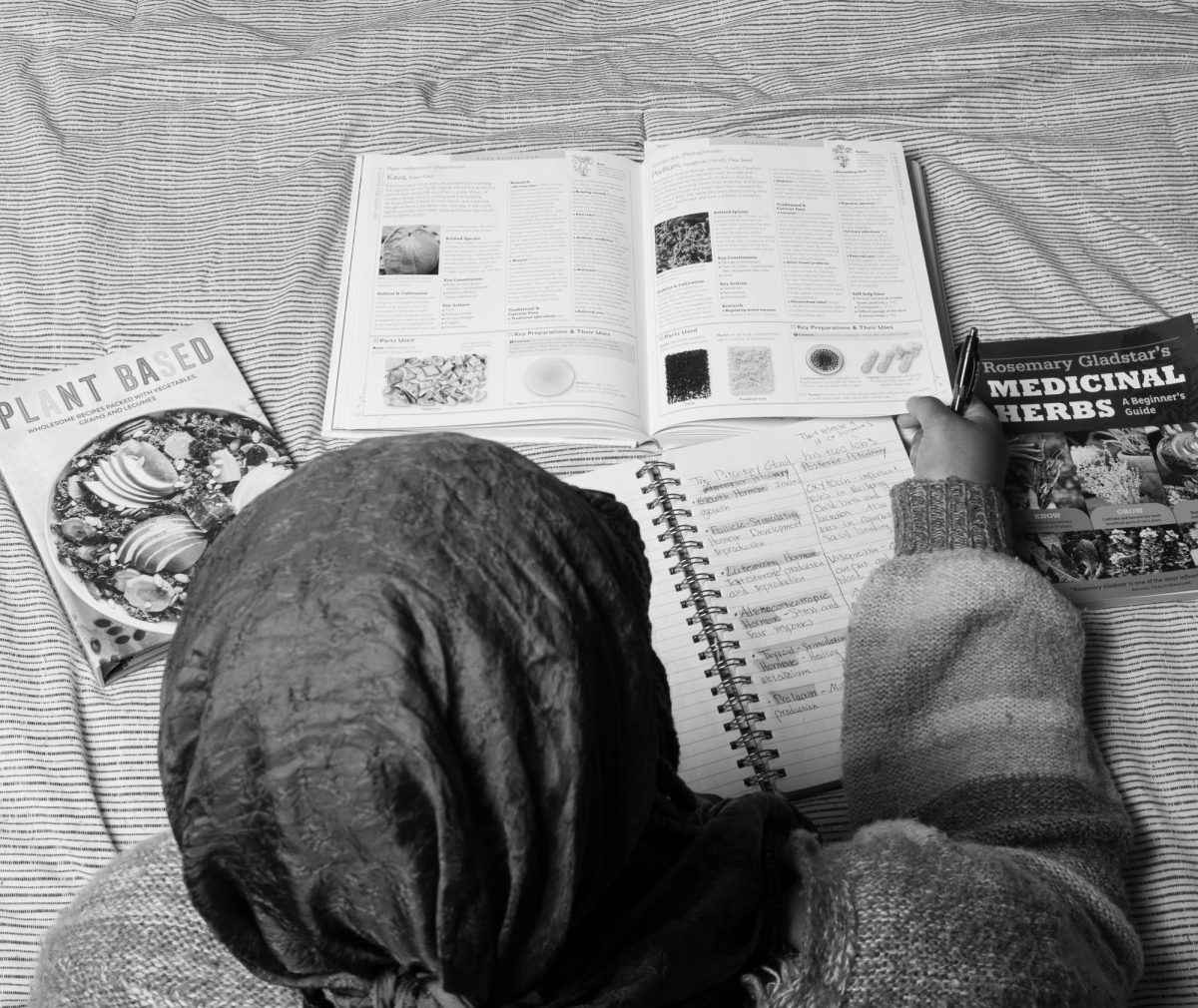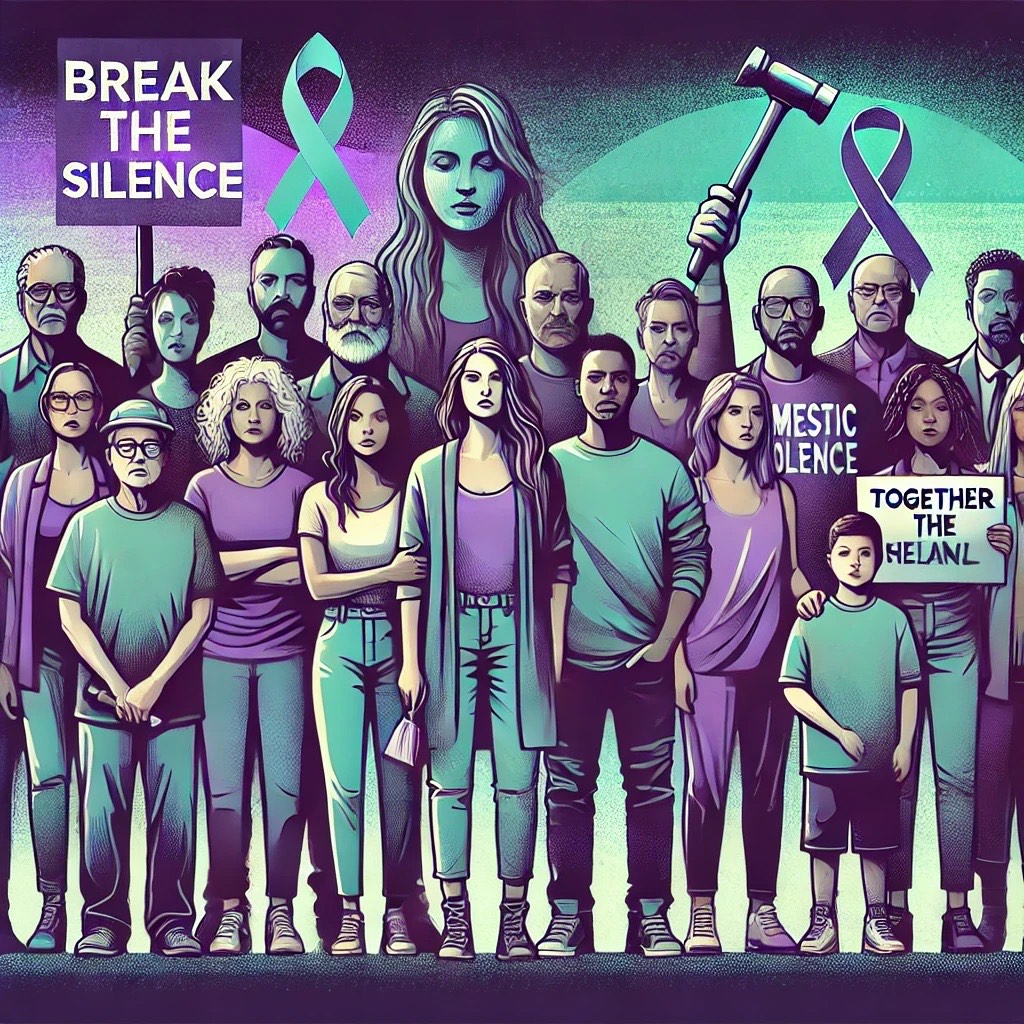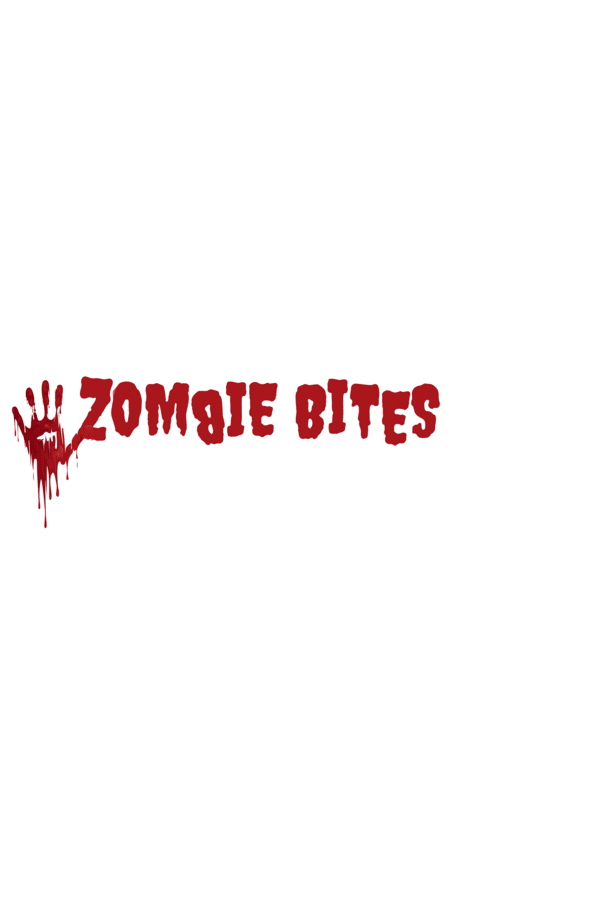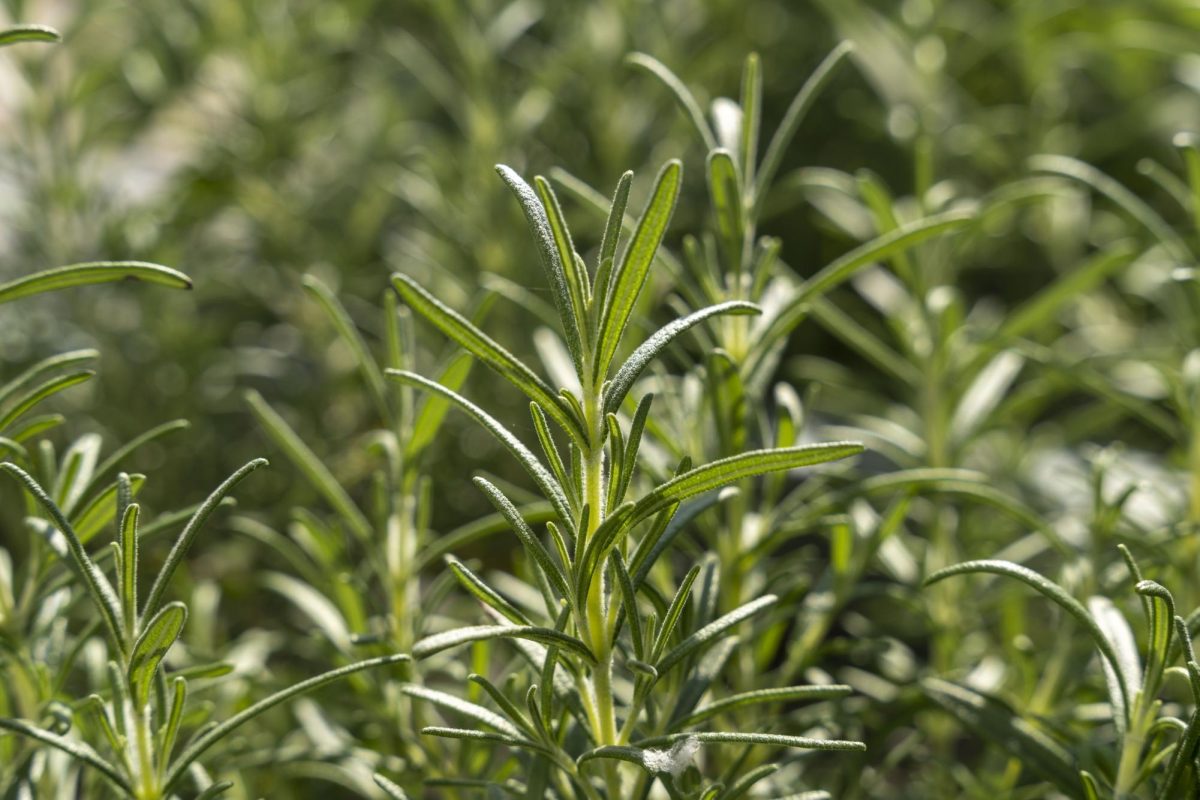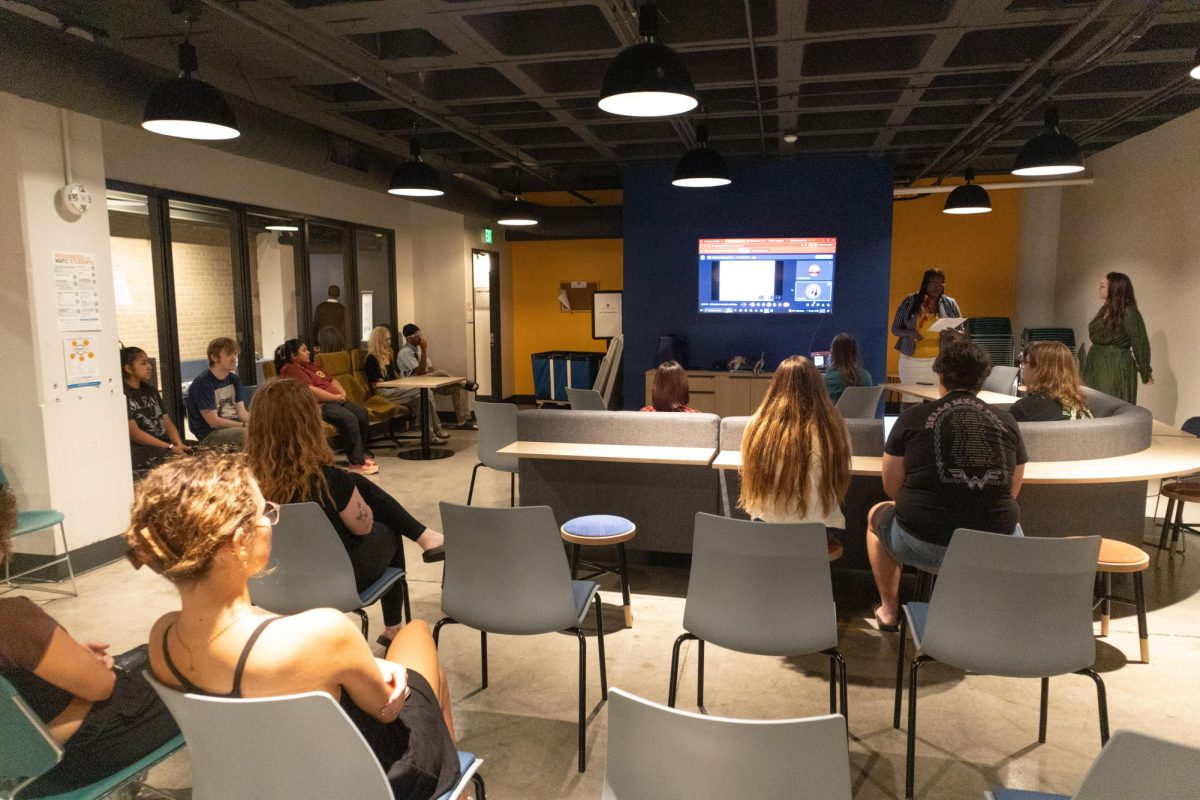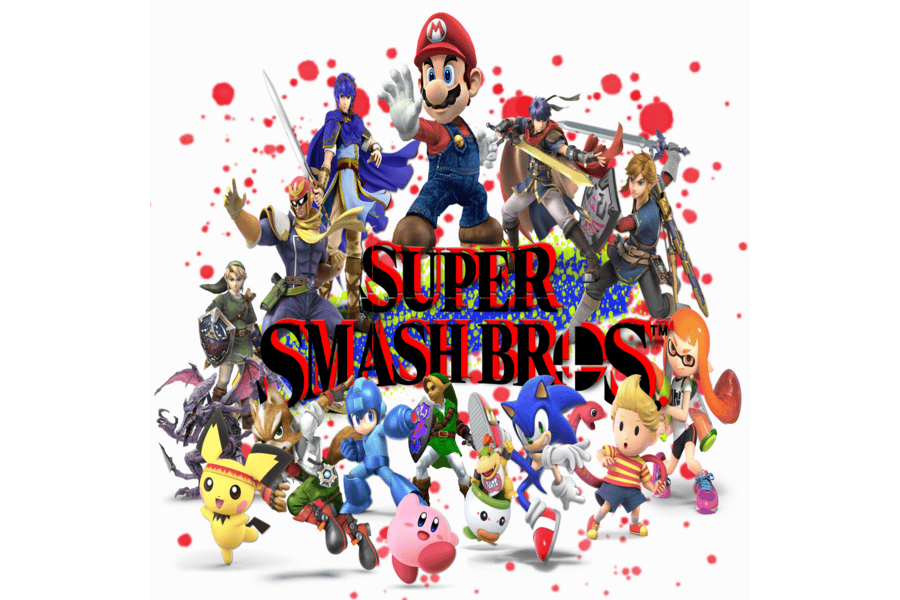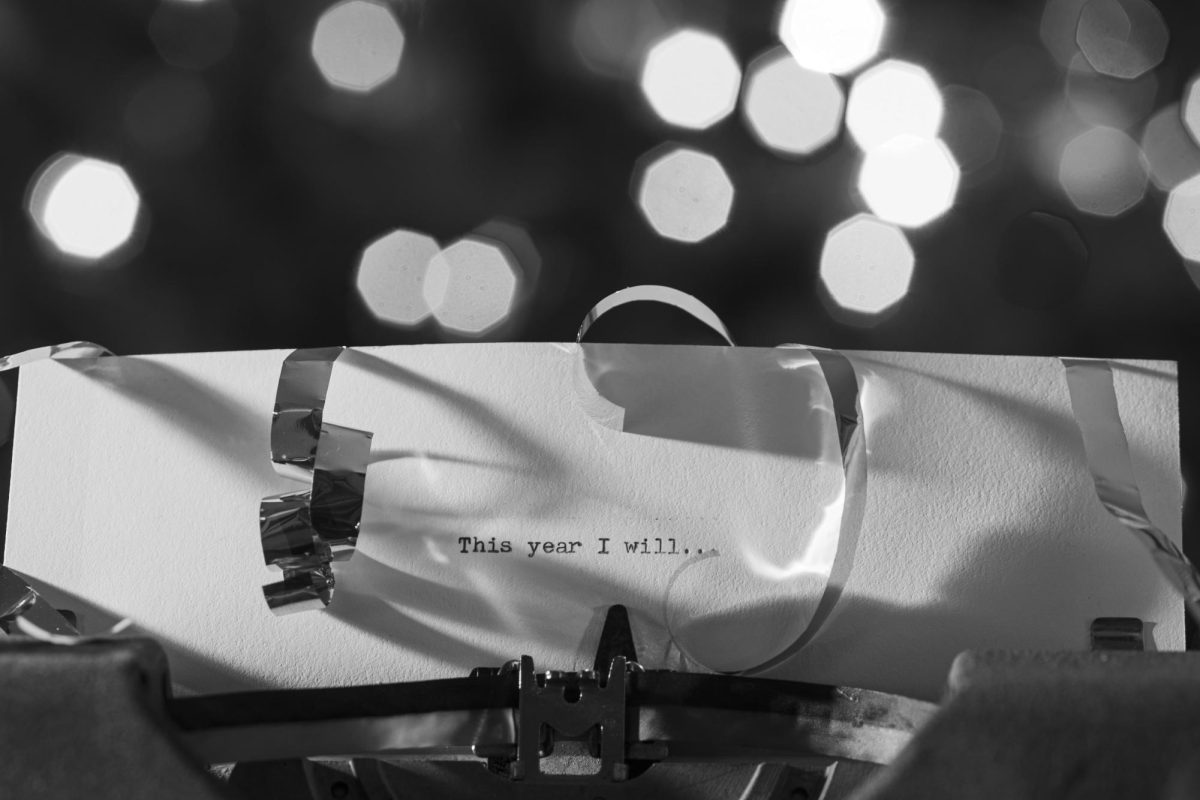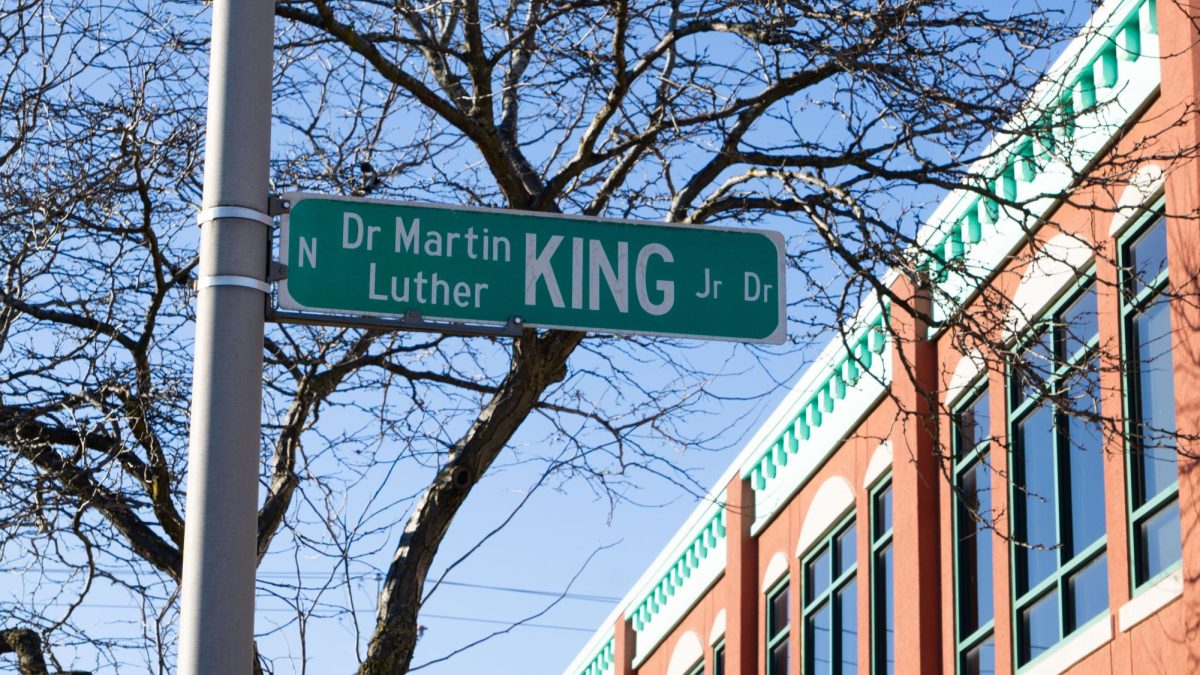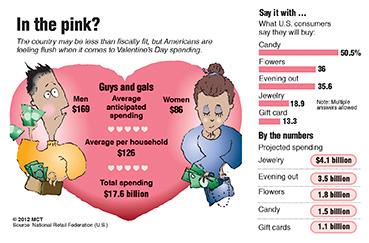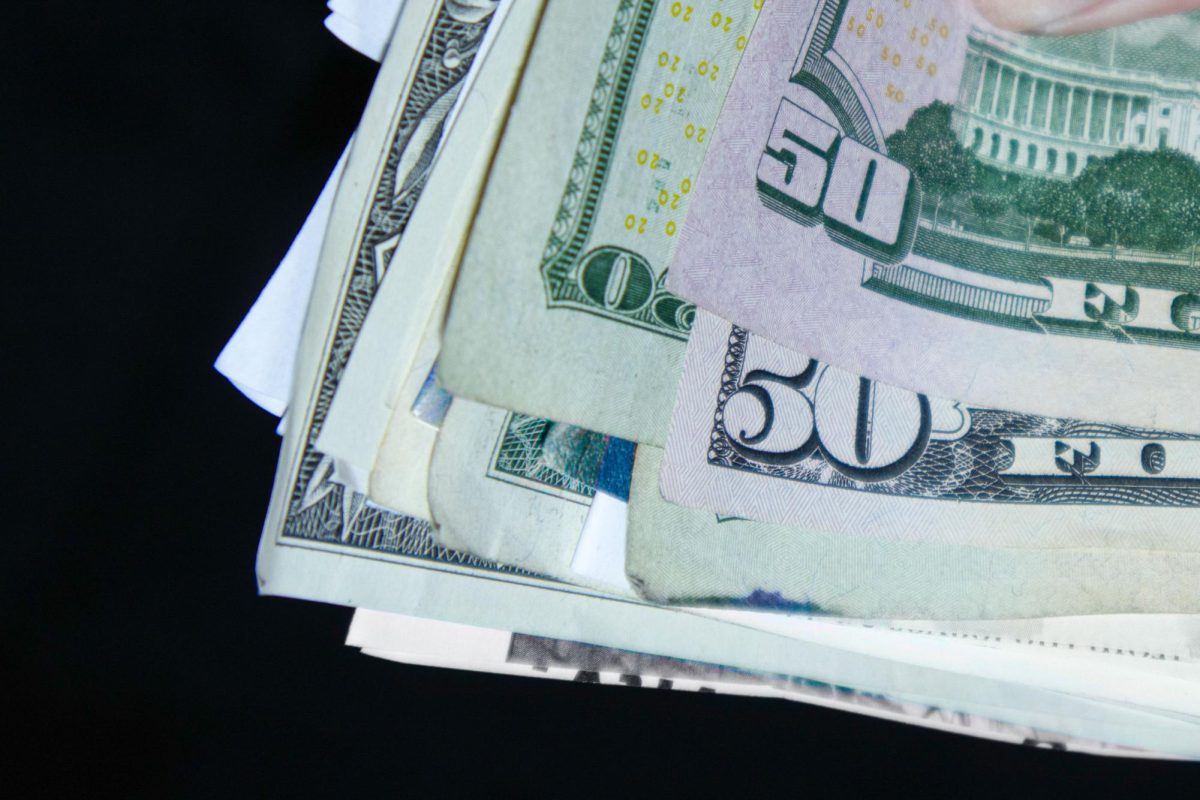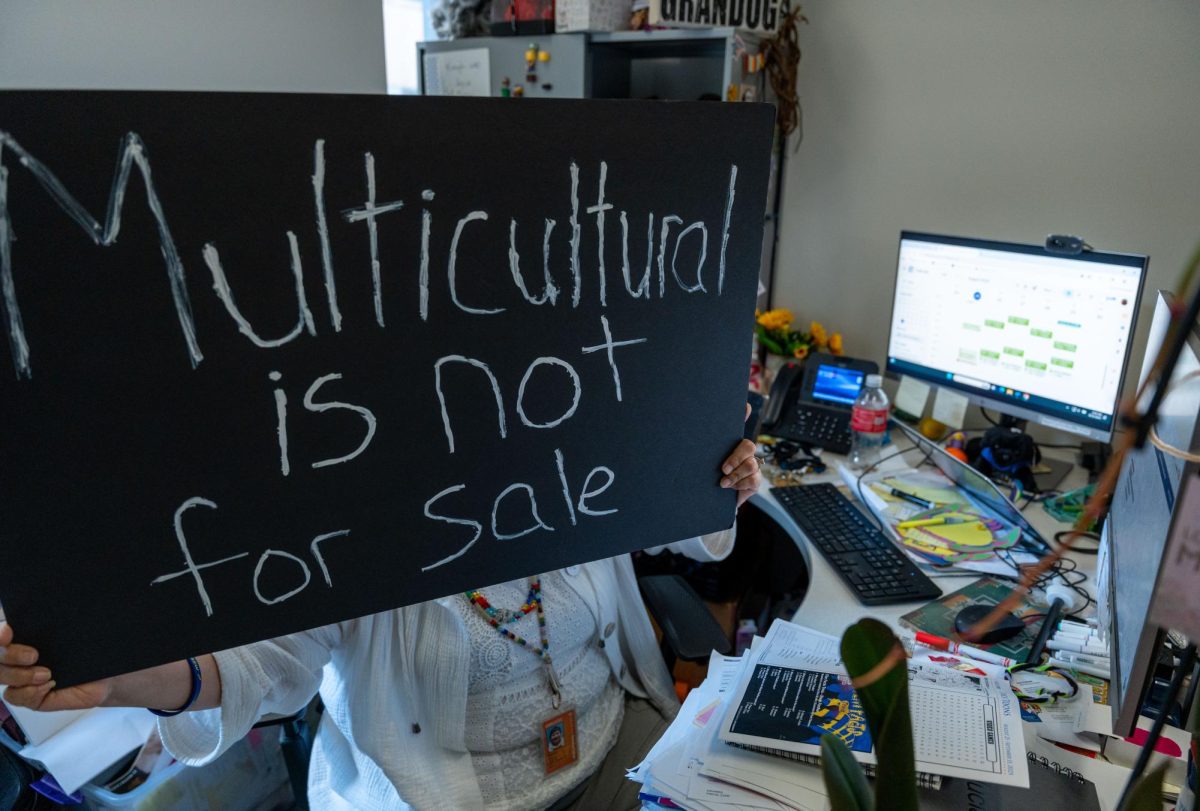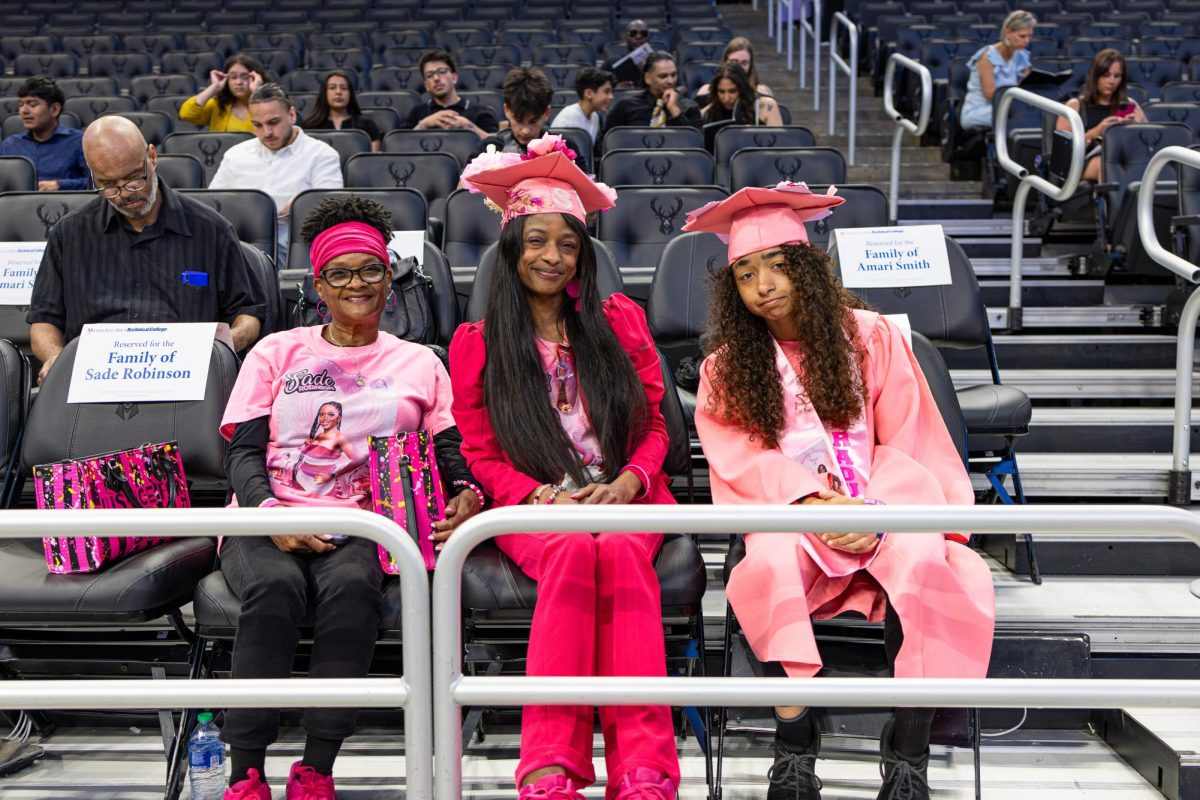The sparks are flying around labs as the science community continues to study the chemical reaction in the brain, along with a particular four-letter word. Flowers, candy and valentines surround this mysterious word commonly spoken around this time of year…LOVE.
This scientific study does not involve the amount of atomic mass in the 79th element, the law of “love” that opposites attract like positive and negative electrons, or the topic of carbon “dating.” The study is based on chemical substances in the brain that make us feel good and supports the reaction when experiencing love.
Since I am taking both biology and chemistry this semester, these love studies impress me more now than ever.
Author Paul Benz explains, “Love is essentially a chemical reaction caused by certain neurotransmitters in the brain.” Benz also says, “The studies have drawn conclusions from the presence or the absence of the neurotransmitters and have identified people who are in love will excrete a chemical substance known as pheromones.”
The word pheromones intrigued me, so I wanted to share my findings.
Pheromones are naturally occurring, odorless matter which excretes externally and generates responses from the same species. The scientific studies in love chemistry are interesting; however, I believe there is such a wider structure of what love measures in someone’s life.
Since love is one of the major human emotions, the topic is mysterious to me and I tend to believe it involves so many factors and different forms.
Take infatuation, for example.It is passion and lust driven, extremely intense but short lived. I think of the sweet words, “I’m falling in love with you,” and what about when someone says “I’ve fallen out of love with you”? Does love hold power between people? I believe when a person truly experiences love, however it happens, there is a strong bond formed.
Lastly, my biology instructor Chris Schroeder, MS, CT (ASCP), related the bond I am talking about last week on the topic of science and personal relationships, which was enlightening on both spectrums.
Schroeder spoke on the two main types of bonds when it comes to atoms: the ionic and covalent bond. An ionic bond is a bond formed between oppositely charged ions. The ionic bond’s characteristics are very weak and unstable which is obviously broken. The covalent bond is the opposite, two or more atoms share valence electrons and attempt to satisfy the octet rule. Covalent bond’s characteristics are stable, strong, long lasting, and high energy (E).
Whether love means being someone’s “Hero,” like Enrique Iglesias sings, or your “Bleeding Love,” like Leona Lewis states in her song, I have to say, if love exists in your life, I hope it’s bonded covalent-style.
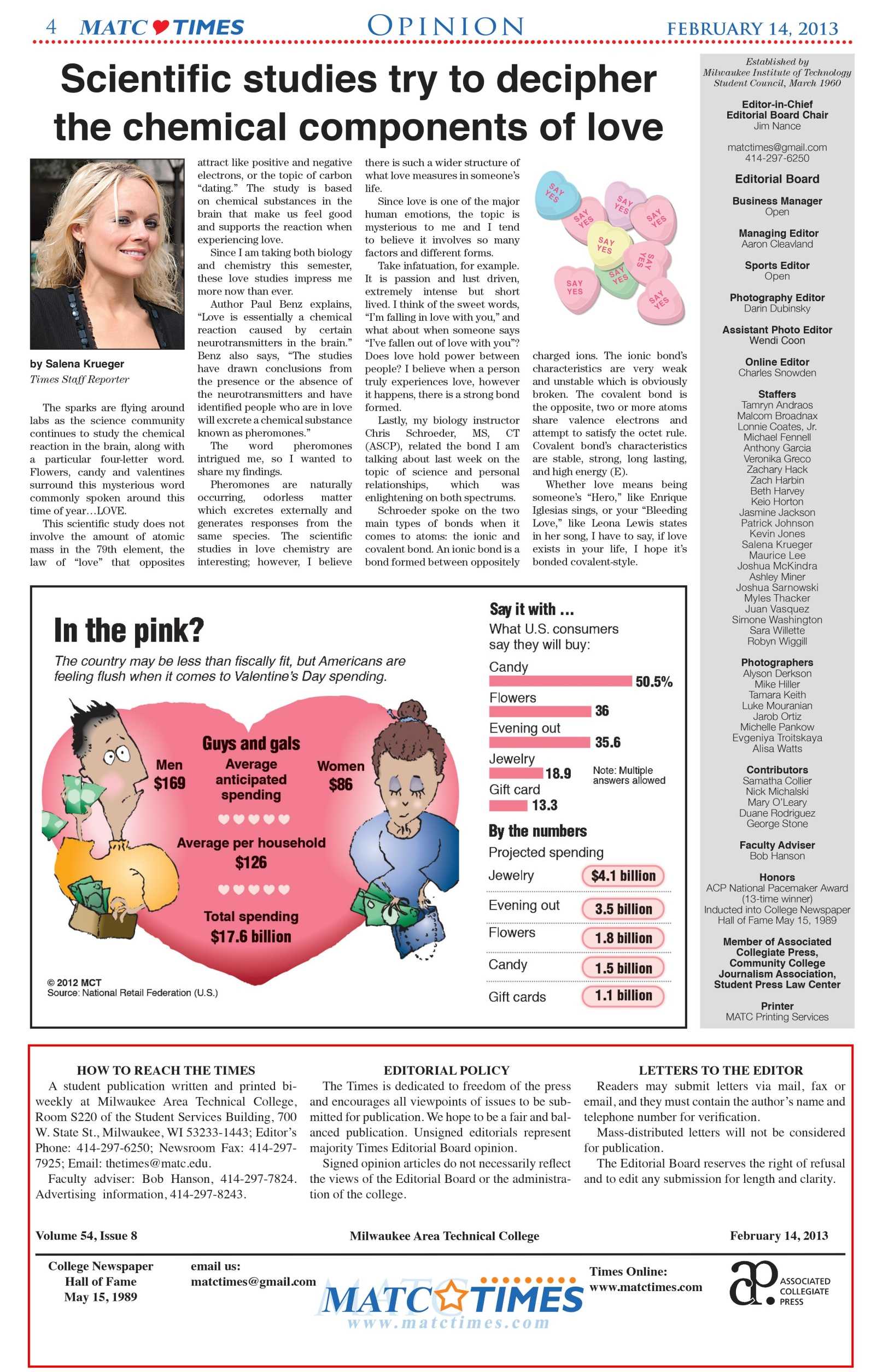
Printed Version (MATC Times)

